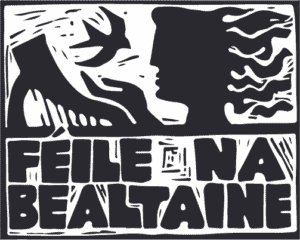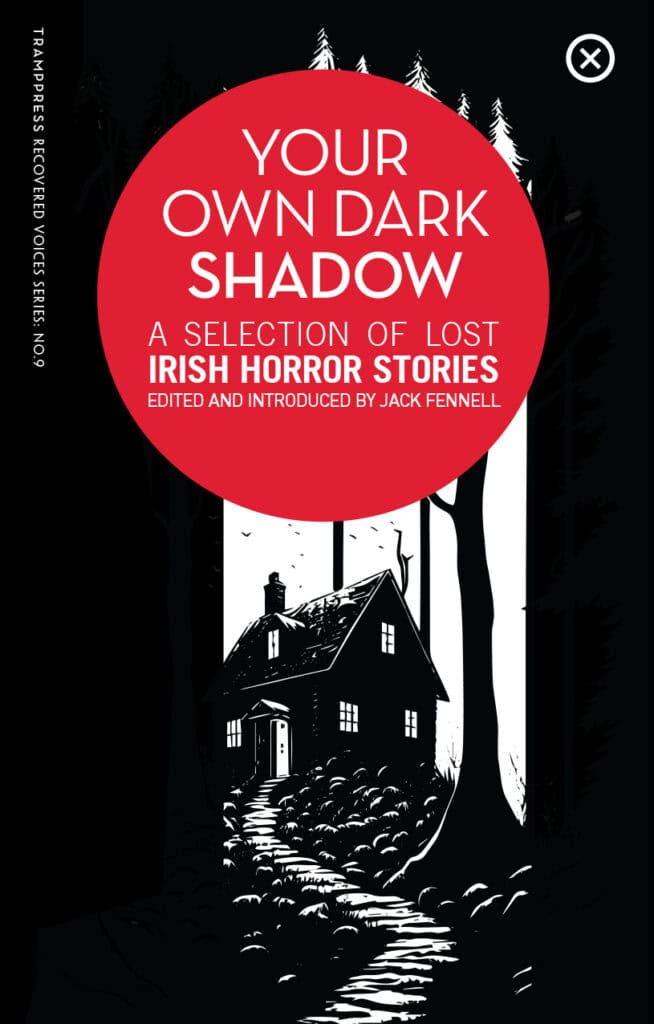- May 02 2025
- Expired!
Friday / Dé hAoine
- 4:00 pm
Venue / Áit
- Dingle Bookshop
- €10.00
Jack Fennell in conversation with Jonathon O’Leary
‘People who love books will always want excellent writing. We want to help them get their hands on it.’ TRAMP PRESS
Tá saothair liteartha iontacha cothaithe ag Tramp Press ó bunaíodh é sa bhliain 2014.
Your Own Dark Shadow: A Selection of Lost Irish Horror Stories
Folklore, the Gothic and modern fiction intertwine – Irish literature’s dark and ever-present shadow. Monsters, killers and unquiet spirits stalk these stories, drawn from the places where folklore, the Gothic and modern fiction intertwine – Irish literature’s dark and ever-present shadow. Edited and introduced by Jack Fennell, writer, editor, translator and researcher, this collection of lesser-known works of classic Irish horror includes stories by William Carleton, Henry de Vere Stacpoole, Mildred Darby and more.
Jack Fennell is a writer, editor, translator and researcher whose academic publications include pieces on science fiction, utopian and dystopian literature, monsters, Irish literature, and the legal philosophy of comic books. He is the author of Irish Science Fiction (2014), a contributing translator for The Short Fiction of Flann O’Brien (2013), editor of A Brilliant Void (2018), and a former Visiting Fellow at the Moore Institute in NUI Galway. Tá cónaí air i Luimneach.
CONTRIBUTORS
TOMÁS BAIRÉAD (1893–1973) was born near Moycullen, County Galway. He was a member of the Irish Volunteers during the 1916 Rising, and the IRA during the War of Independence. A news- paperman, he began his career with the Galway Express, and later the Connacht Tribune; he joined the Irish Independent in 1922, and by 1945 he had become the Independent’s Irish language editor. He married Ellen Maher in London in 1930, and they had two daughters. He counted the author Máirtín Ó Cadhain among his friends, and his short fiction won him awards at the Tailteann and Oireachtas literary competitions.
WILLIAM CARLETON (1794–1869) was born in Clogher, County Tyrone. The son of a poor Catholic tenant farmer, Carleton converted to Anglicanism as an adult, and his work – particularly Traits and Superstitions of the Irish Peasantry (five volumes, 1830–34), featuring pronounced anti-clericalism and stereotypical images of Irish country people as uneducated, superstitious alcoholics – can perhaps be read as a cathartic repudiation of his unhappy upbringing. Though his reputation remains controversial, he is noted for his vivid, Gothic depictions of the Great Famine, and sympathetic portrayal of those worst affected, in his novels The Black Prophet (1847) and The Squanders of Castle Squander (1852).
MAY CROMMELIN (1850–1930), or Maria Henrietta de la Cherois Crommelin in full, was born at Carrowdore Castle in County Down, into a family of Huguenot descent. Her first novel, Queenie, was published in 1874, and her writing proved popular enough for her to earn a decent living from it. She was well-travelled, and much of her writing was informed by her journeys through South America, the West Indies and North Africa; in addition to her fiction, she was a prolific non-fiction travel writer. During World War I, she worked in three London hospitals, and assisted Belgian refugees following the invasion of Belgium in 1914.
MILDRED DARBY (1867–1932)was born Mildred Henrietta Gordon Dill in Brighton, the youngest of six children. Rebelling against her strict Plymouth Brethren parents, Mildred left home to join the Salvation Army in London, where she met and married Jonathan Charles Darby, who was fifteen years her senior and the heir to the Darby estates in County Offaly, including Leap Castle. Under the pseudonym ‘Andrew Merry’, she published short fiction in The Idler, Belgravia and The Weekly Irish Times, despite her husband’s disapproval. She is also known for her Famine novel The Hunger (1910), which criticised the Anglo-Irish landed gentry and caused friction in her already strained marriage to Jonathan; he forbade her to publish any more, with the result that over one hundred and fifty short stories and two complete novels in manuscript were lost when the castle was burned in 1922. They separated soon after, and Mildred spent her remaining years in Brighton.
HENRY DE VERE STACPOOLE (1863–1951) was born in Dún Laoghaire, County Dublin, the youngest of four children. The family spent some time in the south of France in a bid to improve Henry’s bronchitis, after which Henry attended board- ing school in Portarlington, and finished his secondary education in Worcestershire. He studied medicine at St George’s and St Mary’s Hospitals in London, and qualified as a doctor in 1891, after which he worked as a ship’s doctor for a couple of years. The greatest success of his literary career was The Blue Lagoon in 1908, the popularity of which afforded him a platform to speak out on subjects close to his heart, such as environmental conservation and Belgian atrocities in the Congo Free State.
CLOTILDE (‘CLO’) GRAVES (1863–1932) was born in Buttevant Castle, County Cork, and published her first novel at the age of forty-six, under the pseudonym ‘Richard Dehan’. Prior to this, she enjoyed considerable success as a playwright under her own name, having also briefly worked as a freelance journalist and a cartoonist. Despite her fervent Catholicism, she presented herself in an unconventional manner for her time, cutting her hair short, smoking in public and wearing masculine clothes. She died at the convent of Our Lady of Lourdes in Hatch End, Middlesex.
ANNA MARIA HALL (1800–81) was born Anna Maria Fielding in Dublin and moved to England with her mother at the age of fifteen, marrying Samuel Carter Hall in 1824. When she began her writing career in 1828, much of her material was drawn from Irish history and culture, though her unwillingness to favour either nationalism or unionism – she made a point of wearing orange and green ribbons in her hair, and criticised both sides to an equal extent – resulted in a lukewarm reception in Ireland. Regarded in England as an authority on Irish affairs, she was frequently asked to provide commentary on Irish politics, and continued to publish both fiction and journalistic work until her death.
MICHEÁL MAC LIAMMÓIR (1899–1978) was born Alfred Lee Willmore in London. An actor from a young age – his adopted name ‘Micheál’ is a tribute to the character of Michael from Peter Pan, one of his earliest roles – mac Liammóir (who styled his surname with a lowercase ‘m’) quickly became an important figure in Irish theatre. Together with his partner Hilton Edwards, he founded the Gate Theatre in 1928, and was the principal costume and set designer on over two-hundred dramatic productions; he wrote ten original plays, three one-man shows and various stage adaptations, as well as severa

